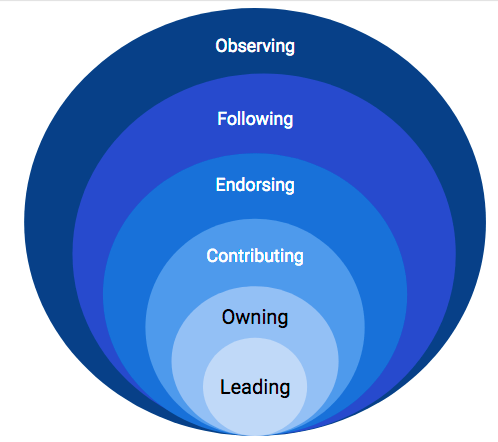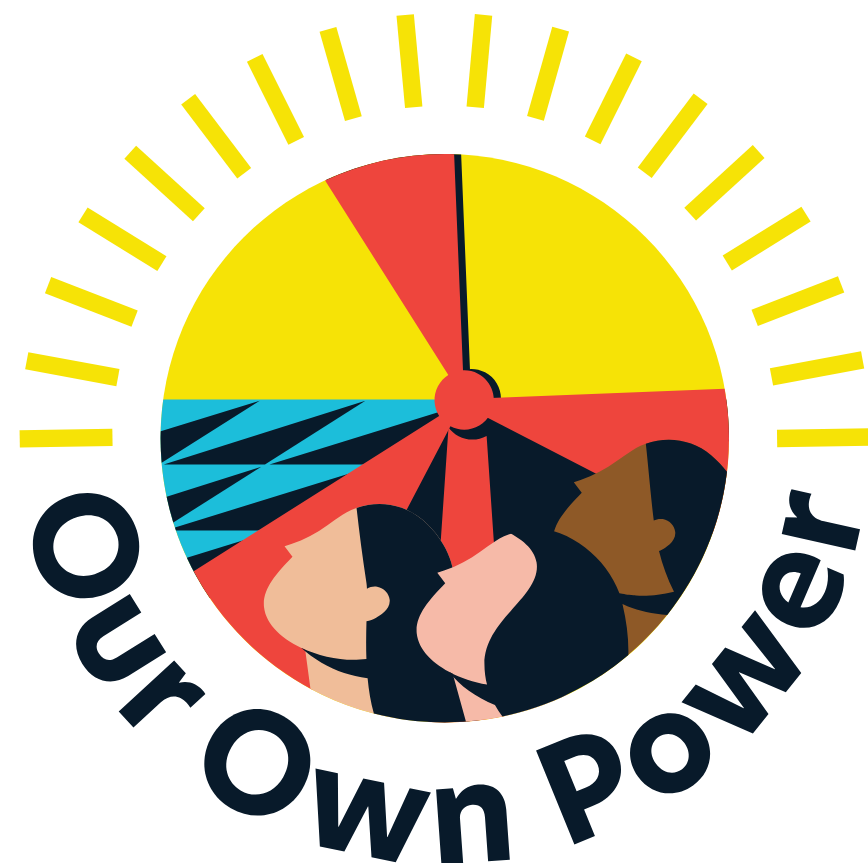Social movements are powered by people. This workshop explores how groups build people-power, and what digital tools might support that work.
Outcomes of this training
- Understand the concept of “Engagement Layers”
- Assess your group’s strengths and weaknesses
- Set targets for growing your group’s people-power
- Start planning what digital tools you will use to build your people power!
Preparation
- Prepare your materials – figure out how you’ll display the ‘Engagement Layers’ diagram, and a large ‘group growth goals’ table to fill in collectively. Ensure that each person will have paper and pens for individual work, and print copies of any pages of this guide you would like to have on paper.
- You might share the ‘Key Concepts’ (pages 4-6) for participants to read in advance of the workshop. If not, make sure you are familiar enough with the concepts to present them to your group – practice!
- If you are unsure, talk to your 350.org contact person or coach.
After your workshop, you can email help@350.org with feedback from your group – what worked well? How can we improve this guide?
Suggested Workshop Outline
|
~90 mins |
Activity |
|---|---|
|
10 min |
Introductions
|
|
15 min |
Layers of Engagement Concept 5 min – Introduce the concept of the Engagement Layers (see Concept note and example on page 4). Reflection on Power – “Reflecting on the Engagement Layers, where do we think a group’s power comes from? If some of us went to meet with a politician or decision maker, what would make them listen, and take our demands seriously?”
|
|
15 min |
Exercise #1 – Where are we now? As a group, estimate the size of each Engagement Layer in your group right now. Record in the “Growth Goals” table. Don’t worry about being perfect – quick estimates are useful.
|
|
20 min |
Exercise #2 – What are the growth goals for your group’s people power! Set ‘Long-term, mature group’ targets. Invite everyone to spend a few minutes individually, writing down what they feel the long-term targets in each layer need to be, to have real influence in the community, to reach the goals of making your chosen target (our city, town or institution).
Set interim growth goals: For each layer, set reasonable goals for 90 days from now, and 1 year from now. Think about activities your group might be able to do in the next 3 months to growing your people-power. Keep the table in your group records, and plan to review it in 3 months, to check your progress. |
|
20 min |
#3 – Which Digital Tools are right for us? (See details on page 7)
|
|
10 min |
Conclusion
When the work is done, finish with your group’s closing ritual! |
Facilitator note: Observe the feeling of your group after setting ‘growth goals’ – are people overwhelmed or feeling confident? Does your group’s resources match your ambition? If there is a good feeling, continue on. If there is unease, it’s better to stop and change the workshop plan, to address the concerns.
E.G. if this is your first campaign, and your group has only 3 people active so far, it might feel overwhelming to try to get a city of 10 million people to make a “Fossil Free” declaration! This is a good time to adjust your target. You could choose to focus on a smaller area of the city at first, or a local school, church or business. It is better to start with small, achievable goals, so you can get a ‘small win’ quickly, building momentum and practicing your campaigning skills on a more reasonable scale.
Concept – Engagement Layers
The ‘Engagement Layers’ is a model to think about the structure and power of a group. It is sometimes called a ‘ladder’ or a ‘pyramid’ of engagement. It can help you to:
- Identify what ‘layers’ your group is strongest in, and where you need to focus on development.
- Set goals and make plans for growth
- Invite people to move closer to the core, developing their leadership.
A healthy organization will have participation at all levels.
The six layers, described:
OBSERVERS are aware of your organization.
e.g. % of community who know your group exists (via social media impressions, traditional media reach, or in-person encounters).
Observers need ways to hear about our work – in person (at their doors or in the community) and in traditional or social media – and opportunities to give us their contact details so they can get updates (to become ‘followers’)
FOLLOWERS have signed up for communication
e.g. agreed to receive newsletters, follow you on social media. They have given you their phone number, email address, address, or other contact details.
Followers need regular updates about what the campaign is doing, and regular invitations to act: sign petitions, share content with their friends, come to events, volunteer for specific tasks, complete a survey, or donate (to become ‘endorsers’)
ENDORSERS join ‘easy’ requests & support your work
e.g. sign online petitions, donate sometimes, ‘like’ and ‘share’ your posts on social media.
Endorsers need appreciation, recognition for taking action, and invitations and encouragement to stay involved regularly. (to become ‘contributors’)
CONTRIBUTORS regularly show up
e.g. attend events when invited, contribute time and/or money regularly.
Contributors need a place to communicate with each other, to share ideas and build community. If you need more ‘organizers’ or ‘leaders’ you might recruit them from this group.
OWNERS/ORGANIZERS share the work of the group
e.g. organize & recruit for events, send member newsletters, keep meeting notes, track finances, manage social media
Owners need a database of followers and their contact details, to make it easy to contact supporters. They need regular meetings to connect with each other, to make and share plans. In between meetings, they need an easy way to communicate with each other, and to share planning documents. Owners may also need a physical space to store equipment!
LEADERS focus on supporting others
e.g. Facilitate & coordinate the team, organize trainings, coach others.
Leaders need an easy way to communicate with other leaders and organizers. to organize team meetings. They can also benefit from relationships with campaign group leaders at other organizations, or in other local groups, to support them in developing their leadership skills through training, coaching and advice.
If your group has extra time, discuss how ‘Engagement Layers’ relate to the ‘Spectrum of Allies’ from the ’Build your Strategy’ workshop. ‘Observers’ might be Opponents, Neutral, or Passive Allies – but you won’t know until you’ve spoken to them. ‘Followers’ are ‘Passive Allies’ – it’s your role to turn them into ‘Active allies’ by inviting them to act with you!
An example!
The following is an example from a campaign group that began work 1 year ago, and built their membership consistently throughout that year, starting from a core group of just 7 people. During that year, there was a local election, during which the group was particularly active gathering contacts to support their cause. The numbers for your group might look very different, and that’s OK!
- OBSERVERS – about 15,000, or 1 in 10 people in the community. In the local population of 150,000 people, about 10% are aware of the group.
- FOLLOWERS – about 3000. Made up of 2700 email subscribers, 1179 who follow the group on social media, and 600 people who have given their phone numbers. 3000 is a good guess at the total number of individuals.
- ENDORSERS – about 400. The last time the group ran a petition, about 400 people signed. Another petition earlier in the year had 700 supporters. And when people were invited to fill out a survey asking how they would like to be involved, about 260 people responded. 400 is a good guess in the middle of these ‘easy’ actions. It’s OK to not be so precise.
- CONTRIBUTORS – 72. The campaign group has a private Facebook group that people are added to if they have been consistently ‘showing up’ as volunteers. It currently has 72 members.
- OWNERS – 13. This group meets every month. In the lead-up to the election, they met more frequently – every 2 weeks, and then every week as the vote got closer.
- LEADERS – 4. These people organize the meetings every month, and work to keep the team relationships together and on track.
Setting Group Growth Goals
First fill out ‘Where we are now’ column, then ‘Long term goals’, then the two in the middle.
|
Where we |
90 day target |
1 year target |
Long-term, mature group | |
|---|---|---|---|---|
|
Observing | ||||
|
Following | ||||
|
Endorsing | ||||
|
Contributing | ||||
|
Owning | ||||
|
Leading |
Which Digital Tools are right for us?
Introduction: “So far we’ve seen that our power comes from the people who we can organise to take action, and we’ve set some goals for growing our people-power. Now it’s time to think about what tools – both digital and face-to-face – we use to do this. Digital tools are a way to help us organize and mobilise more people, efficiently. Technology complements and supports our face-to-face community organising techniques – it does not replace them. We are a human community, linked by technology.”
- If your team is already using a set of digital tools, (like a social media group or page, a website, an email list, a spreadsheet of contacts) make a list of them. Discuss which engagement layers these tools serve, and how satisfied your group is with the current setup.
- Identify gaps. Which engagement layers are your digital tools not currently serving? What tools are you aware of that could help to fill those gaps in support?
- Identify Next steps
- If your group can’t make a clear decision about which tools to use yet, figure out one or two people who can do more research (which may include talking to your 350.org contacts) and make a recommendation to your group about which tools to use. Set a target date by which you’ll make the decision.
If there is time left in your session, discuss:
- What activities does your group have planned in the next 30-60 days, and how can we use those – or create new activities – to grow the layers of engagement?
Links to more resources
People power:
- It’s helpful to find ways to think of next steps to involve people: a similar model we sometimes use is the Ladder of Engagement.
- To recruit and bring people closer into our circle, we often need to have effective meetings with them: learn more on How to build a base using One-on-Ones
- Or, if you have people in your group but you’re having trouble delegating those tasks to others, here are some tips: How to get others involved
Digital engagement tools:
- Action Network Guide! If your group decides to use Action Network, your team’s ‘digital tools lead’ should reach out to the 350.org team to ask to get an Action Network account set up. Once that’s done, read this guide to get started with Action Network!
- Case Study: Getting people to your actions (English-only)
- Guide to writing email blasts (English-only)
- Guide to creating online petition and letter campaigns (English-only)
- Digital Trainings from the 2013 Global Power Shift conference – from writing good emails, to social media, to storytelling! (English-only)
